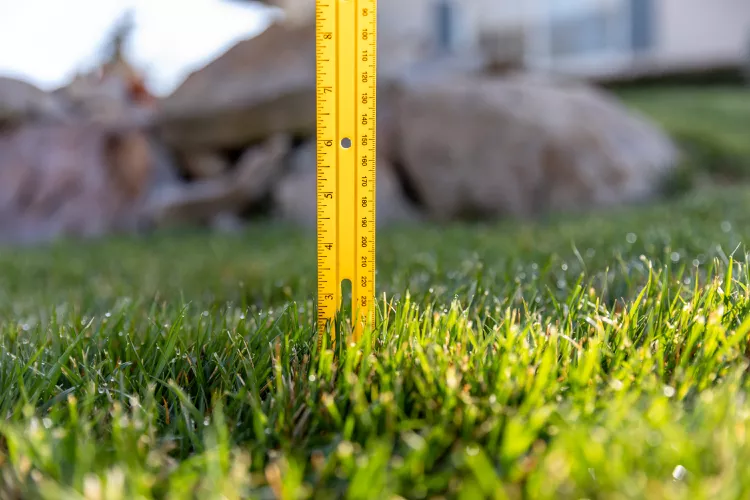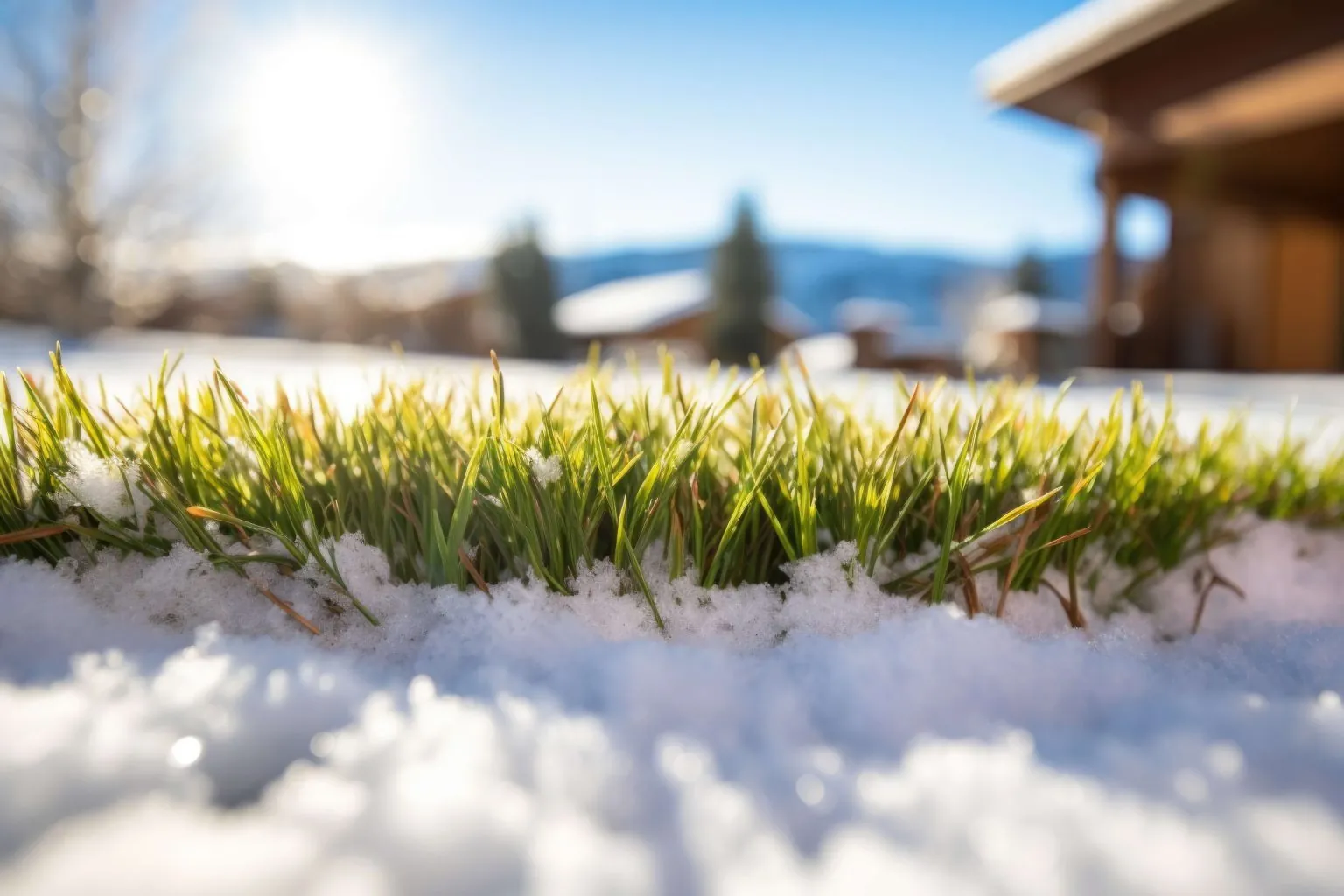Should I Fertilize Before Winter?
Last Updated on October 23, 2025 by Duncan
Your grass requires nutrients at all times of the year, including winter.
Giving your lawn the nutrients it requires to thrive at the correct times is critical to success, and winter fertilizers’ primary objective is to ensure your grass has the resources it needs to get through the cold months of the year.
So, if you have been wondering if you should fertilize your lawn before winter, yes, you should, as it comes with plenty of benefits, such as:
- Reduces disease susceptibility.
- Reduces the chance of winterkill.
- Promotes deep roots in late autumn and early spring.
- Increased shoot density
- Provides early Spring green-up
When should you apply fertilizer before winter?
You should apply the first winter fertilizer before winter begins, typically in May.
By doing this, you ensure that your grass is prepared for winter by raising its iron content and overall vitality.
You should make the second treatment around eight weeks later, in accordance with conventional fertilizing guidelines.
In this scenario, you should be looking at a July application that will provide the lawn with iron and nutrients to keep it healthy for the duration of the cold months.
Fertilizing in winter might provide varying outcomes depending on the coldness of the winter and the actual temperature of the soil.
While nutrients are beneficial to the lawn and will improve its appearance in most situations, you shouldn’t expect rapid growth.
If a lawn is in poor health and you apply winter fertilizer, the fertilizer will most likely not improve the situation. For the best outcome, ensure that you incorporate winter lawn fertilization into an adequate year-round fertilization and grass maintenance regimen.
Which fertilizer options do you have?
There are many fertilizers that you can go for. The common ones being:
Liquid fertilizers
The beauty with liquid fertilizers is that you can administer them to both the ground and the lawn foliage itself, often known as foliar applications.
When you apply liquid fertilizer to your lawn during its winter dormancy, it is absorbed mainly through the leaves. Liquid fertilizer provides your lawn with a quick, reactive green-up just as it begins to turn yellow-brown.
Application to the grass encourages the leaves to absorb the fertilizer, making the nutrients more readily available for immediate usage.
Foliar application allows you to make mid-season adjustments to add essential nutrients to your grass if it did not receive the proper combination at the start of the season or if it requires a boost.
Another significant advantage of liquid lawn fertilizer is that you can easily apply it to even the largest of lawns in liquid form, and it can get absorbed not just by the lawn foliage but also the surrounding soil.
This is quite beneficial to lawn maintenance, and while liquid fertilizer is often more expensive, it can be more effective.
Again, the ideal fertilizer for your lawn includes the nutrients your soil needs.
One of the benefits of utilizing a liquid lawn fertilizer is that you can readily incorporate any additional nutrients that your lawn and soil require.
Whether you mix concentrate in a liter sprayer (the less expensive alternative) or buy a pre-mixed bottle that attaches to your garden hose, lawn liquid fertilizer is more versatile because you can apply it to the ground or leaf foliage.
Key features of liquid fertilizer include:
- Uniform application
- Quick leaf foliage uptake when green-up is required.
- Seasonal application deviations are available.
- Can mix with other liquid products
- Easy to apply.
Organic lawn fertilizers
A ‘genuine’ organic fertilizer has been certified as 100% organic, so make sure to have that guarantee when you buy.
The easiest way to ensure that it is 100% organic is to look for the Organic Certified emblem on the bottle or package.
A recommended organic fertilizer is a combination of natural (organic) and synthetic (made) fertilizers.
As a result, using organic lawn food and soil improver combines the benefits of slow-release fertilizer with natural elements like seaweed, fish, dung, and bio-stimulants.
Organic fertilizer is complex to over-fertilize because it is natural, and it really improves the health of your soil and plants.
Because organic fertilizers might be more expensive than regular fertilizers, you can manufacture your own by composting dung from cattle or chickens.
The optimum time to apply organic fertilizer in the autumn is late March or early April.
Another application of organic fertilizer is in the winter, preferably in late June.
Slow-release fertilizer
Most lawns respond well to slow-release fertilizer, which is available at your store.
Apply a delayed-release fertilizer to your lawn once in the autumn before the ground becomes too cold.
Apply your delayed-release fertilizer in late March or early April (when the weather is still warm).
Slow-release fertilizers have the following key features:
- They release nutrients slowly and constantly.
- After watering in, all of the nutrients in the fertilizer are used up.
- Use low application rates to save money.
There is simply the need to apply three times every year (twice in spring and once in autumn).
Another advantage of delayed-release fertilizer is that it provides a steady amount of growth and greening over the course of the treatment, with no spikes in growth or nutrient runoff.
It is critical not to use low-cost, slow-release fertilizers when you are looking for growth because these products tend to release a lot of nutrients at first and then drop down fast, resulting in an early surge in growth and greening but no sustained growth.
Applying a combination of herbicides and fertilizers
New, unique herbicide formulations are available that, when coupled with fertilizer, allow you to nourish your lawn while also controlling broadleaf weeds in one application.
There are numerous solutions available that provide a wide range of NPK and nitrogen sources to meet the unique fertility requirements of your lawn.
Mix products may comprise pre-emergent weed control, post-emergent broadleaf weed control, or a mix of the two.
Granular Oxafert is a popular combination fertilizer and pre-emergent herbicide product that controls Summer Grass, Crowsfoot Grass, Winter Grass, and Creeping Oxalis while also providing an efficient NPK (nitrogen, phosphorus, and potassium) fertilizer application.
For the best outcome, consult a professional to guide you on the best fertilizer to go for.


